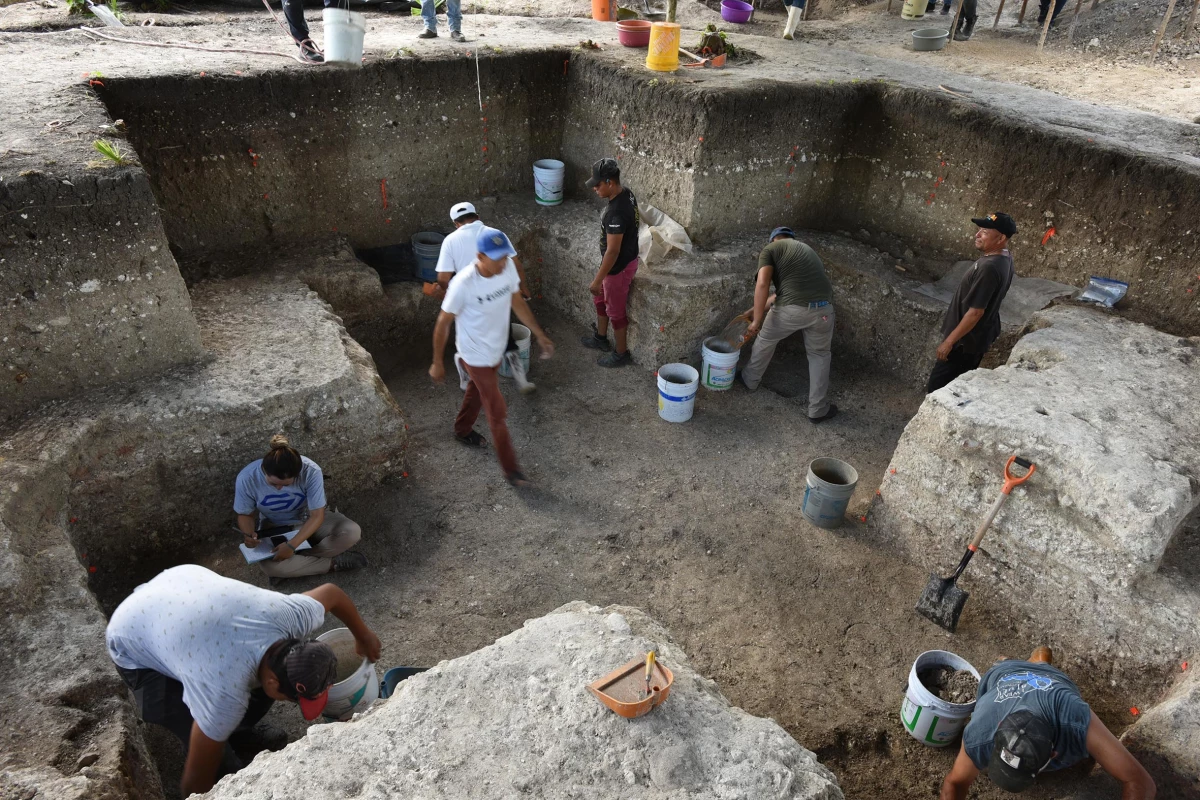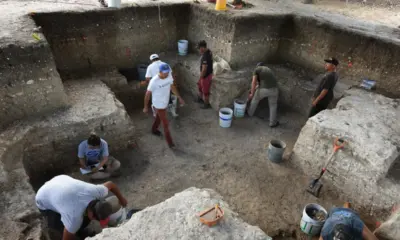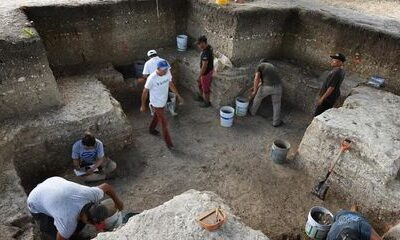Science
Archaeologists Uncover Ancient Maya Monument, Transforming History

Recent archaeological findings in the Maya region of Mexico are drastically altering the narrative of early Mesoamerican civilizations. A monumental discovery at a site known as Aguada Fénix, which dates back to approximately 1000 BCE, challenges long-held beliefs that significant architectural achievements were solely the result of hierarchical societies.
For many years, researchers maintained that only societies with established leadership structures could undertake large-scale construction projects. However, the evidence now suggests that the early Maya were capable of organizing substantial communal efforts without the presence of a centralized authority. This shift in understanding stems from discoveries at various sites, including Aguada Fénix, which is now recognized as the largest known monument in the Maya world.
New Discoveries at Aguada Fénix
The significance of Aguada Fénix extends beyond its size. A recent study published in the journal Science Advances, led by Takeshi Inomata, a Regents Professor of anthropology at the University of Arizona, posits that this impressive structure served as a cosmic map. Researchers propose that Aguada Fénix was not merely a platform but a carefully designed cosmogram, reflecting the spiritual and astronomical knowledge of its builders.
Archaeologists first identified Aguada Fénix in 2020 during excavations in Tabasco, Mexico. The site features a nearly one-mile-long platform, which has since prompted further investigations, revealing nearly 500 smaller sites across southeastern Mexico that echo its design. Recent excavations at Aguada Fénix unearthed a cruciform pit, filled with ceremonial treasures that provide invaluable insights into the rituals of the early Maya.
Among the artifacts found were ceremonial jade axes, which suggest the site was of significant ritualistic importance. “This was really an important ritual place,” Inomata remarked, emphasizing the implications of these findings for understanding early Maya culture.
Rethinking Mesoamerican Civilization
The findings at Aguada Fénix have profound implications for current archaeological theories regarding the growth of Mesoamerican societies. Traditionally, scholars believed that cultures such as those in Tikal and Teotihuacan developed gradually, marked by an increase in settlement size over time. Inomata’s research challenges this perspective, indicating that Aguada Fénix predates these well-known urban centers by nearly a millennium.
Radiocarbon dating of the artifacts from the cruciform pit suggests that these ceremonial practices occurred between 900 and 845 BCE. The meticulous arrangement of colored soils within the pit—corresponding to the four cardinal directions—offers new insights into the spiritual framework of the early Maya. Inomata noted, “This is the first case that we’ve found those pigments associated with each specific direction. So that was very exciting.”
The monument’s layout also features raised causeways and water canals, illustrating the intersection of movement, ritual, and cosmic design. Unlike the grand displays of power seen at Tikal, Aguada Fénix appears to have been shaped by thinkers and planners, possibly astronomers, rather than rulers.
Inomata’s conclusions suggest that the ancient Maya collectively engaged in monumental construction, challenging the notion that significant achievements require social inequality. “People have this idea that certain things happened in the past – that there were kings, and kings built the pyramids,” he said. “But once you see the actual data from the past, it was not like that.”
The discoveries at Aguada Fénix not only illuminate the capabilities of early Maya society but also serve as a reminder of the power of community collaboration. As research continues, the site stands as a testament to what groups can achieve when united in purpose, regardless of their social structure.
As new technologies, such as lidar, enhance archaeological exploration, the potential for uncovering more about this fascinating period in history remains promising. The findings from Aguada Fénix mark a pivotal moment in our understanding of early Mesoamerican civilization, inviting further exploration into how these ancient societies operated and thrived.
-

 Technology5 months ago
Technology5 months agoDiscover the Top 10 Calorie Counting Apps of 2025
-

 Health3 months ago
Health3 months agoBella Hadid Shares Health Update After Treatment for Lyme Disease
-

 Health3 months ago
Health3 months agoErin Bates Shares Recovery Update Following Sepsis Complications
-

 Technology4 months ago
Technology4 months agoDiscover How to Reverse Image Search Using ChatGPT Effortlessly
-

 Technology1 month ago
Technology1 month agoDiscover 2025’s Top GPUs for Exceptional 4K Gaming Performance
-

 Technology3 months ago
Technology3 months agoElectric Moto Influencer Surronster Arrested in Tijuana
-

 Technology5 months ago
Technology5 months agoMeta Initiates $60B AI Data Center Expansion, Starting in Ohio
-

 Technology5 months ago
Technology5 months agoRecovering a Suspended TikTok Account: A Step-by-Step Guide
-

 Health4 months ago
Health4 months agoTested: Rab Firewall Mountain Jacket Survives Harsh Conditions
-

 Lifestyle5 months ago
Lifestyle5 months agoBelton Family Reunites After Daughter Survives Hill Country Floods
-

 Technology4 months ago
Technology4 months agoHarmonic Launches AI Chatbot App to Transform Mathematical Reasoning
-

 Health3 months ago
Health3 months agoAnalysts Project Stronger Growth for Apple’s iPhone 17 Lineup



















